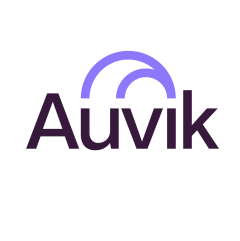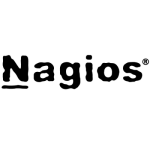What is our primary use case?
We're an MSP. We use this solution for all of our clients. For anyone that has a network more extensive than a switch or two, we install Auvik. We do this to make sure that we're getting the right connectivity and that everything is working as it should. I get alerts whenever something goes wrong, and I can jump in and say for example, "That's there. This is why." And I can tell what is happening. If I'm not on site, I can say, "Plug this port in because whoever was there, just plugged it back into the same switch."
How has it helped my organization?
Having a single integrated platform has helped improve our organization. Ease of use and speed are the most important. I always know that I can go back. I've got a solid monitoring solution within Auvik. I know I can access the solution and get the right information that is updated in real-time.
The solution helps us get ahead of issues. If I see something going on, I can start getting ahead of it before my client notices. I can at least get a heads-up right away as something's going on. It's always better to alert my customer that I found a problem rather than have them call me. There's also a perception of being proactive versus reactive.
Depending on the issue, I have seen a reduction in our MTTR.
I have absolutely seen a TTV with Auvik. The solution allows us to hit the ground running. When we get to a client, it takes me 30 minutes to an hour to absorb what that network looks like and I can start rocking and rolling immediately.
What is most valuable?
The solution's ease of use for our operations is fairly important. It's wonderful for when I'm going into a new client and I don't want to do discovery. The solution plots out a network map for me. The solution tells me where I've got congestion and additional information that would normally require me to do discovery. Auvik is not as in-depth as for example, ExtraHop but this gives me enough of an overview that I can look at a network and say, "Okay, I know where they're at. Now I know where they need to be," and gives me the first stepping stones to get acclimated to the network.
An example of Auvik's ease of use for our operations for an existing customer is if I receive an event that needs to be worked on, whether I'm onsite or not, I can call my client and say, "Hey, if you're seeing network issues, we just caught a couple of alerts." These alerts may or may not be an issue but it's good to have that in our back pocket to say, "Okay, something else is seeing this. " It's another set of eyes. We're a small firm and we can only be in so many places at one time.
The solution provides a single integrated platform. Although the solution doesn't do everything that I would want network-wise it is good enough. For what we pay, Auvik does the job we need it to do.
Auvik keeps our device inventories up to date.
This is the first solution we deploy at every location. We bring out a machine we call a data collector, and we put it in their network, get on DHCP, and it starts to scan immediately. The solution is absolutely fantastic.
Auvik is a fantastic network monitoring solution. When I look just for something that's really focused on network, for the price, Auvik can't be beaten.
What needs improvement?
The one aspect that I dislike about the solution is that there is no current way to export diagrams. If I want to take this and say, "Okay, here's my network map," I cannot export that network map to Visio and make edits or add notes if I need to on the diagram. Those are the aspects that are really missing for me. Not every product has everything I want. But what Auvik's support has told me, is that it's in the pipeline.
The only area that I dislike about the solution is the lack of exportability. That would be a wonderful feature to have.
The exportability of the information is really where I see the big value, and the other area is when network changes occur. One thing I would like to see is the option of an automated backup shortly after a configuration has changed because Auvik monitors the configs. When it sees a new config or I move five ports from one network to another, Auvik picks up that there was a change. The solution knows that it happened, but it won't back up at that time. The ability to do rollback would be wonderful. If something breaks I will have options, "Okay, here's your latest config. Here's the previous config, do you want to roll back?" Juniper offers that in their OS automatically and it is beautiful. This would be a wonderful update.
I would like a little bit more of a deep dive because Auvik uses flow data to update what type of traffic I'm seeing which is pretty good but it's not a hundred percent. What I'd really love to see as well, is an offering of a small appliance to do this type of work, to wash packets.
The exportability of data and network maps can also be improved. One thing that Auvik does well is tell me how long a switch is under maintenance for. For example, if I have a switch, and everything gets pulled up into my portal for the client, I take the serial number, it goes out to Cisco or HP or whomever, and it will tell me how long that switch is under maintenance for. That's invaluable. I know that I have one source of truth I can go and look at and say, "Yeah. Hey, that switch is still good for another two years."
For how long have I used the solution?
I have been using the solution for around two and a half to three years.
What do I think about the stability of the solution?
The stability is rock solid. I haven't had any issues.
What do I think about the scalability of the solution?
The solution has done everything that we have needed it to do so far. I can't complain about the scalability.
How are customer service and support?
Any problems I've had were resolved by the technical support team. Auvik's technical support is email support first, which I'm not happy about, but I understand that that's the way they work. I haven't had an issue that was so critical that I needed the situation resolved immediately.
How would you rate customer service and support?
Which solution did I use previously and why did I switch?
Previously, we used Symantec RMM. We used a couple of other items for a while, and finally, once we got onto Auvik and I showed my business partner the power of Auvik, he said, "Yeah, this is what we're going with." Literally within an hour, he said, "You just made up my mind."
How was the initial setup?
The initial setup was not bad. We installed an agent on our data collector, gave it the name of the client, and told it what networks to start looking at.
What about the implementation team?
The implementation was completed in-house.
What's my experience with pricing, setup cost, and licensing?
What is good about Auvik is that it is a monthly spend versus a CapEx. That tends to be a bigger driver, especially for a small environment. Using a product like Auvik and having the same visibility that any tech can walk into and, assuming they've got a decent networking background, can look at it and go, "Oh, yeah. Here's what it is." With this, my client that has 15 switches doesn't need to worry if something happens to the main infrastructure person.
What other advice do I have?
I give the solution a nine out of ten.
There are certain aspects that I've had little issues with, but nothing that couldn't be resolved by support. I can't be an expert on every product. I've got ten different switching vendors I work with and have to learn the syntax. As long as I've got SNMP and I can get Telnet, who supports most of the major vendors out there, Cisco, Juniper, and Brocade. I am very much in favor of the product and the discovery capabilities therein.
Depending on the vendor, the solution reduces repetitive, low-priority tasks through automation. Cisco, Juniper, or Brocade, have CLIs that Auvik can get into and do backups automatically for me, which is a need but is repetitive. Auvik does configuration backups but overall, that's the big area the solution automates for me.
We're a regional player, we definitely have visibility to our environments.
The visibility that helps our IT team focus on our networks is fairly important. Visibility is the first building block that we have for every single client.
Auvik's automation has not necessarily affected our IT team's availability. The solution does configure backups for me, but if I wasn't using Auvik, I would be using something else to do that. For what I am using automation for, the solution is pretty freaking awesome.
We're a smaller firm, and all of our guys are in senior positions. As we move along, Auvik is going to be watched and managed by lower-caliber staff who can raise the flag and run it up to somebody as needed.
If I need to get a listing to my vendor, say, "Here are the serial numbers that I need to renew maintenance on for next year," I can't just take that and export it out of Auvik. But overall, the solution does make my life easy because I can just copy the serial numbers and give them to my vendor, whomever that may happen to be.
Auvik as a cloud-based solution covers enough compared to an on-prem network monitoring solution. It does a good enough job, without being on-premise. The solution is fairly lightweight and it's fairly innocuous. Auvik doesn't cause any problems on the network, it sits there and receives. Auvik is a very good passive solution.
I recommend the solution. This is a good product, it's easy to set up, and just give it the once over. I think that it's one of these solutions that can really add value. Depending on the size of your network, it might be small enough and it might be the right size to help you get your hands wrapped around it. I haven't seen the solution in an environment of more than 500 users. That is my scale limit on Auvik, but I know that the solution goes further. The smallest environment in which I have seen the solution used was in a doctor's office that had three switches.
Which deployment model are you using for this solution?
Public Cloud
If public cloud, private cloud, or hybrid cloud, which cloud provider do you use?
Amazon Web Services (AWS)
Disclosure: PeerSpot contacted the reviewer to collect the review and to validate authenticity. The reviewer was referred by the vendor, but the review is not subject to editing or approval by the vendor. The reviewer's company has a business relationship with this vendor other than being a customer: MSP





















